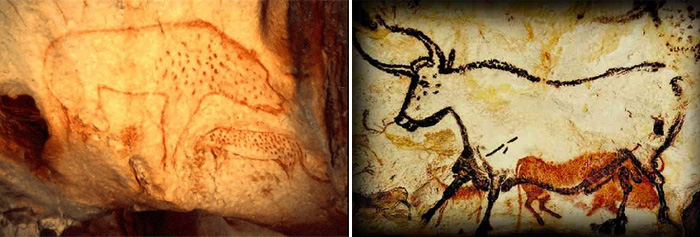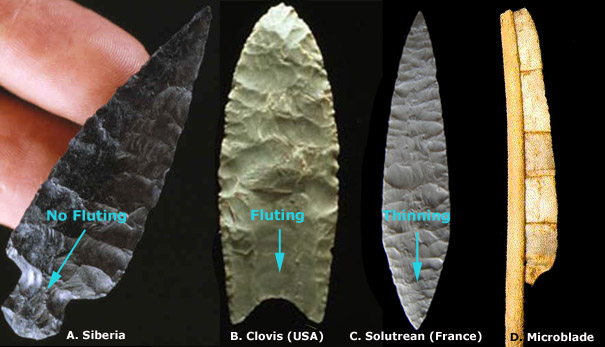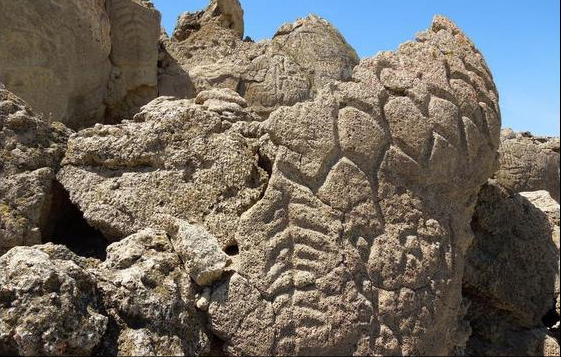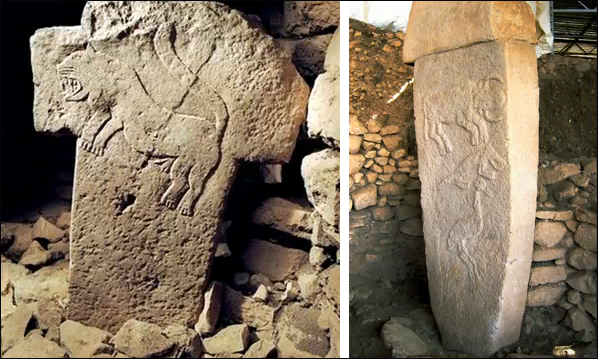
"Two birds, beautiful of wings, close companions, cling to one common tree: of the two one eats the sweet fruit of that tree; the other eats not but watches his companion. The self is the bird that sits immersed on the common tree; but because he is not lord he is bewildered and has sorrow. But when he sees that other who is the Lord and the beloved, he knows that all is His greatness and his sorrow passes away from him." -- Mundaka Upanishad
What Was Pre-Consciousness Like In Man? (continued)
Jaynes proposes that the (pre-consciousness) bicameral mind coincided with language. This makes sense because the Right Hemisphere would have to communicate its intentions to the dominant Left Hemisphere through some medium.
Let's look at human history pre-dating 1000 BCE. I should remind you that consciousness did not evolve all at once, overnight. It likely had its starts and failures before it took off with relative speed on a global scale. How and why that happened is an interesting topic for later on.
If early man lacked consciousness (as we have previously defined it) then we should see no evidence of an inner narrative -- no evidence of the inner, personal life of an individual. And since people were hearing hallucinated voices and receiving beneficial instructions from these voices, we ought to see some evidence of this in artifacts, legends, myths and literature.
45,000 BCE
The human language has its origins at least hundreds of thousands of years ago, possibly even older. We are only now beginning to appreciate the use of gestures, scents, eye gazes, hand symbols, petroglyphs, cave paintings, symbols and utterances that are the foundation of human language and thought. While we have yet to discover evidence of language from extremely ancient artifacts, some of the evidence we do have dates back to the Neanderthals, about 45,000 BCE.
Beginning with Neanderthals, we infer the use of language from evidence found in caves. In a story I wrote about the ancient use of 432 hertz tuning, I showed how a 45,000 year old flute was made from a bone and surprisingly contained the same scale ("do, re, mi...") that we use today. It seems not only was music a form of communication but the instructions needed to manufacture the flute with the precise location of holes to produce this scale is also indicative of language.
I'll post the video demonstration of this flute here. You may want to read the whole story HERE.
In the same cave where the flute was found we have magnificent drawings of some of the now extinct local game that these men hunted [see below]. This art is also a form of language. Like many modern artists, the output from the creative Right Hemisphere often appears to the artist as an emerging phenomenon and does not require consciousness. In fact, nothing about the artifacts of ancient Neanderthals indicates that they had what we have defined as consciousness. But maybe the evidence has been lost.
20,000 BCE
If we advance to 20,000 years BCE we encounter the Solutreans who coincidentally originated from the same region as the Neanderthal caves in Europe. These men were homo sapiens sapiens and the climax of their civilization was a marvelous spear point, made from stone, that pre-dates the Clovis points of America. Solutrean points were extremely difficult to make and required lots of individual instructions and decisions in the process.
Solutrean points [above] are found all over the American continent and their manufacture must have required some type of language to learn, recall and teach these complex skills. In areas where the Solutrean points were found, petroglyphs mostly depict the local animals, their footprints and directions for resources like water. These primitive petroglyphs likely triggered the sound or visual image of the thing they intended to represent and were bicameral in nature.
10,000 BCE
A couple of thousand years of recovering from the last Ice Age, humans (likely Solutrean or Clovis) carved shapes and patterns into several large boulders in what is now Nevada [below]. It appears now that they were recording a celestial event that caused illuminated plasma filaments in the sky from an extremely strong Solar coronal ejection. As beautiful and meaningful as they are, these oldest American petroglyphs show no hint of the inner life of someone with consciousness.
I should also mention the stone circular sites uncovered in Turkey, Gobekli Tepe, which has been dated to about this same period. Despite the amazing bas relief, there are no personal artifacts revealing who made this or why. It is a major creative act of the era, but we have already seen that creativity is in the unconscious realm.
I will leave you with this last image of Gobekli Tepe... then onward to the actual writing of ancient men. Will it contain evidence of a subjective "I"?
Next up: Ancient Literature
[Thanks for your continuing encouragement in my efforts to write this up and post it. It really keeps me going. I have about 5 hours of relative pain-free time every day, despite the medicine. I'll try to make it well spent... but now, it's time.]





